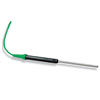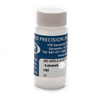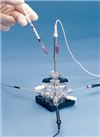

Hydrogen Sulfide Detection
Hydrogen Sulfide detection sensors for use with TBR1025 and TBR4100
Low detection limit sensors to record in vitro
Features
- Hight selectivity and sensitivity to hydrogen sulfide with fast response time
- Broad linearity
- For use with Apollo1000, Apollo4000, TBR4100 and TBR1025
- ISO-H2S-100-CXX requires cable 91580 (sold separate)
Options
| Order code | Diameters |
| ISO-H2S-2 | 2 mm |
| ISO-H2S-100-CXX | 100 μm |
Benefits
- A dry sensor that works like a 2mm wet sensor
- Response Time: ~5 s
- Detection Limit: < 5 nM
- Sensitivity: 1-4 pA/nM
Applications
- Measure biological hydrogen sulfide in vivo or in vitro in tissues or biological media
- Measure hydrogen sulfide released from drugs
- Cell culture, cell suspensions, arteries, in vivo applications
Hydrogen sulfide and oxygen
Like nitric oxide, hydrogen sulfide is a potent vascular signal that can mediate vasoconstriction or vasorelaxation depending on the oxygen level and tissue. In the rat aorta, hydrogen sulfide concentrations that mediate rapid constriction at oxygen level will cause rapid relaxation at lower oxygen levels.
Sensor details
The ISO-H2S-100 is a hydrogen sulfide sensor with a 100 µm diameter tip. It is designed like the dry microsensors, however, it works like a traditional 2 mm sensor. The sensor can be ordered in a variety of lengths from 2–5 mm. It incorporates WPI’s proprietary combination electrode technology in which the hydrogen sulfide-sensing element and separate reference electrode are encased within a single shielded sensor design.
The ISO-H2S-100 offers several advantages:
- Requires no sleeves or filling solutions
- Durable for long-term use, because of its platinum wire construction
- Rapid response time
- Broad linear range (Range is based on the length of the sensor tip)
About Hydrogen Sulfide
Although hydrogen sulfide is generally thought of in terms of a poisonous gas, it is endogenously produced in many mammalian tissues. It has been detected in micromolar amounts in blood and brain tissue. Hydrogen sulfide is reported as having a broad range of biological functions and although its potential to participate in cell signaling is clear, this biological role is not well understood. Hydrogen sulfide is strongly anagolous to nitric oxide because they share several physical and metabolic properties.
91580
Microsensor Adapter Cable for use with Nitric Oxide, Hydrogen Peroxide, Oxygen, Hydrogen Sulfide, Glucose Microsensors and Temperature Sensor













Request
Catalogue
Chat
Print